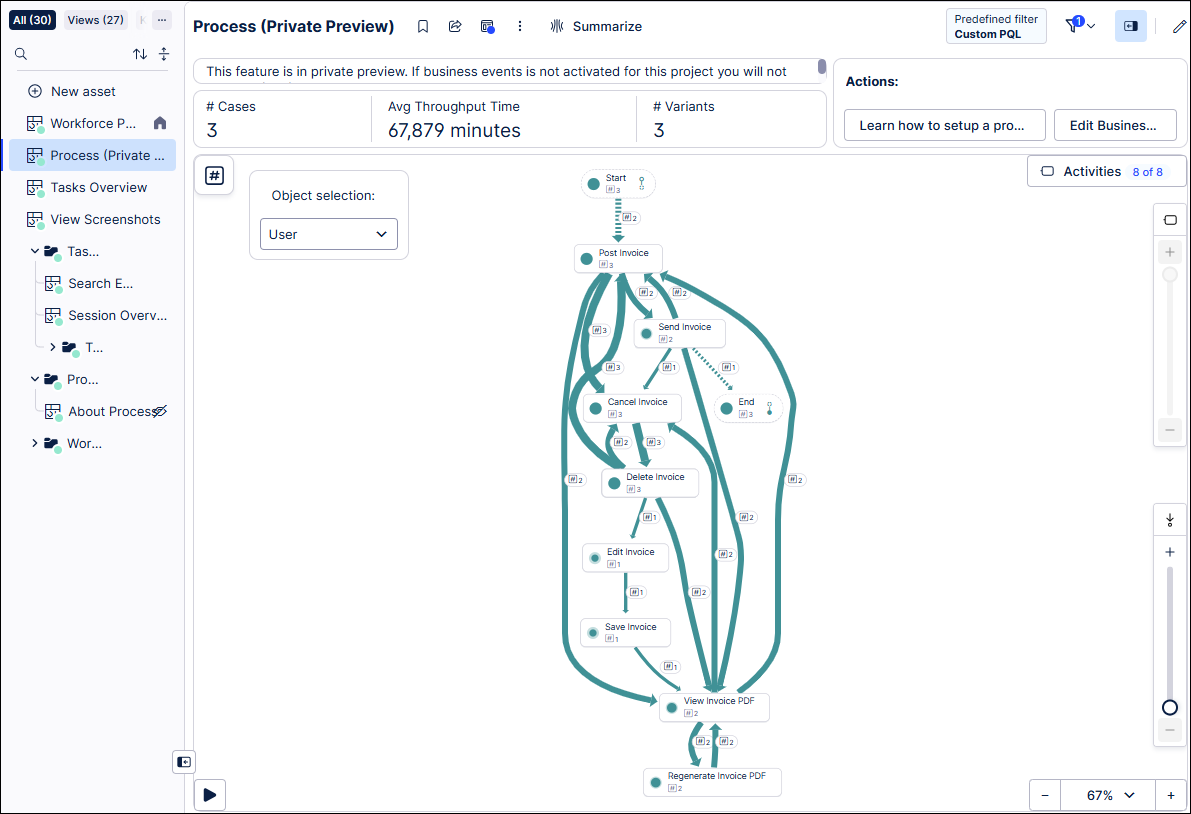Business Events in Task Mining
This feature is currently available as a Private Preview only
During a Private Preview, only customers who have agreed to our Private Preview usage agreements can access this feature. Additionally, the features documented here are subject to change and / or cancellation, so they may not be available to all users in future.
If you would like to use this feature, create a Support ticket at Celonis Support.
For more information about our Private Preview releases, including the level of Support offered with them, see: Feature release types.
Business Events overview
Task Mining data contains a large number of user activities known as raw events which can be difficult to use in a meaningful way. You can get a more granular understanding of your process by grouping and labeling raw events, adding business context and adding them to your process graph as Business Events.
For example, you could create a Business Event by associating a generic action, such as Click with a semantically-meaningful event like Create ticket or Submit invoice. Adding this Business Event to your process graph provides a more granular view of your business process.
For information about different event types in Task Mining , see Labels in Task Mining.
Business Event high-level overview
Business Event creation options
You can create a Business Event in two different ways. Create a Business Event from:
Tip
It's generally quicker and easier to create a Business Event from a raw event as some of the information you need to include will be automatically added and you can then edit it as necessary. We recommend creating Business Events from scratch only if you're a more expert user of Task Mining .
Creating a Business Event from a raw event
In the Celonis Platform Navigation bar, select Data > Task Mining.
All available Task Mining projects open.
Open the project you want to create a Business Event for.
Select the Business Events button
 .
.The Business Events screen appears.

Select Go to raw events to view the raw events that exist for your project.
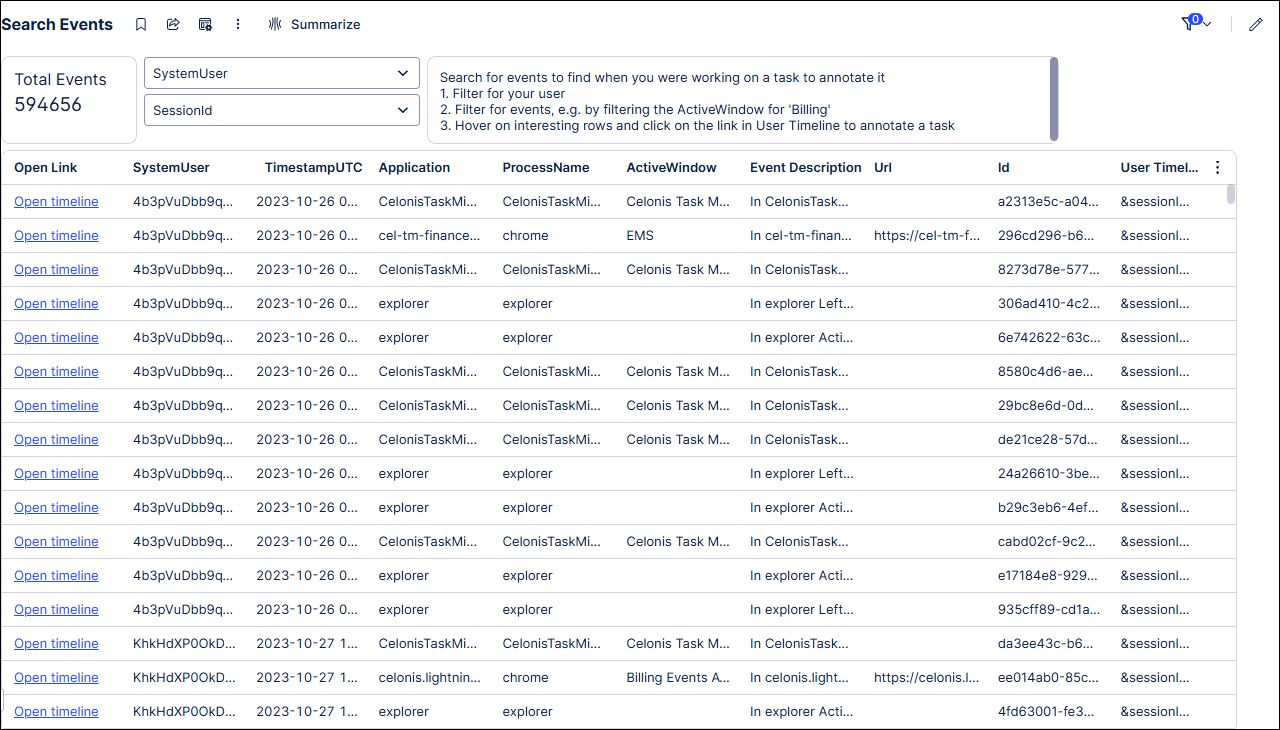
Search the raw event data to find a raw event you want to create a Business Event from.
Select Open timeline to open the raw event.
Select Create Business Event.
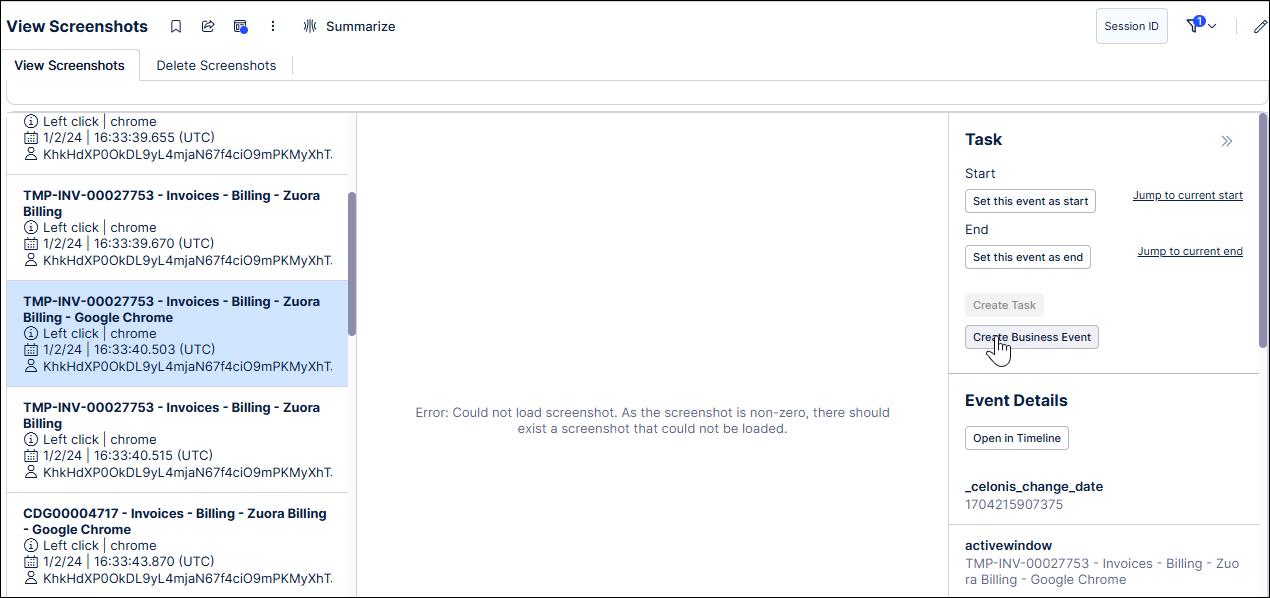
The Create Business Event screen opens, with filter condition fields related to the raw event automatically populated.
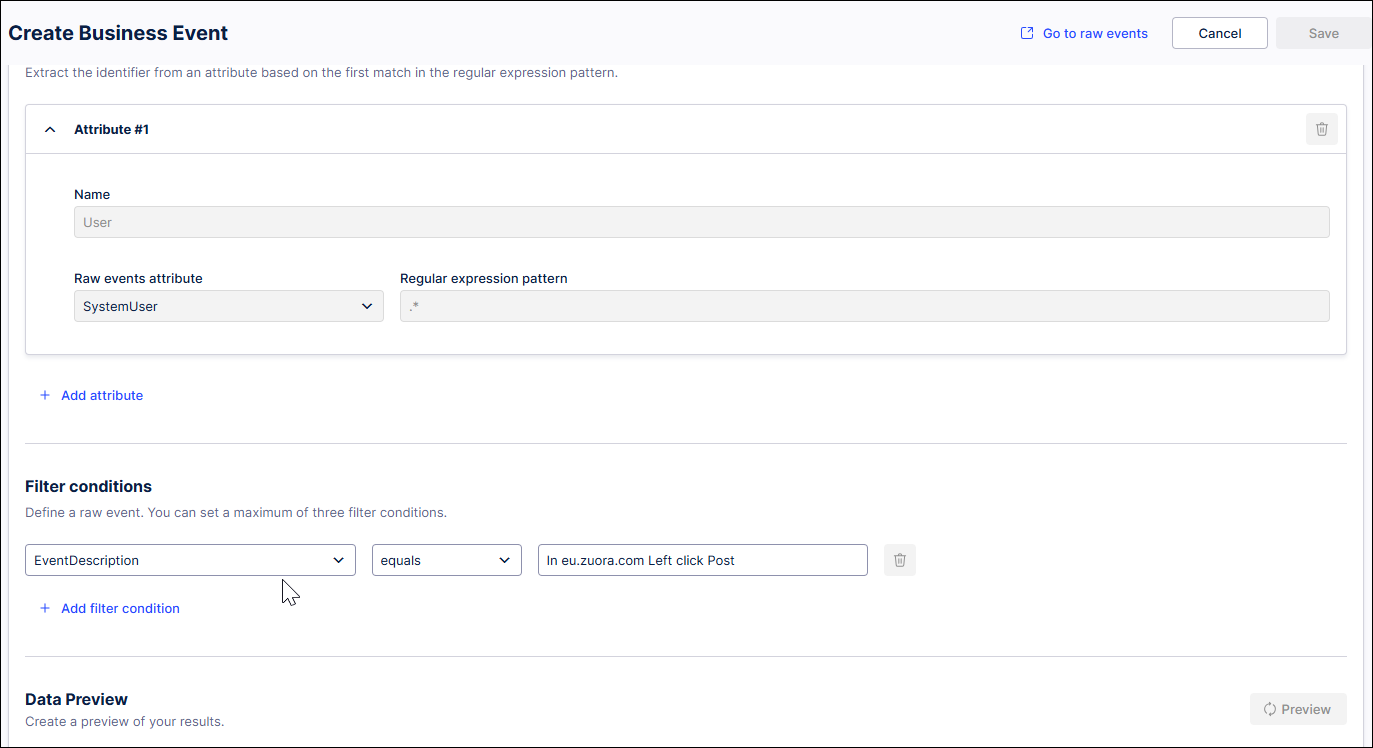
Complete the Business Event fields.
You can edit the populated filter condition information here if necessary. You can also add additional filter conditions.
In Data Preview, select Preview to see the raw events that will be included in your Business Event.
Note
If your data set is large, the Data Preview may not display. This is because Data Preview only looks at a limited amount of data (approximately 100k events).
Select Save.
The Business Events screen opens and displays your Business Event.

Creating a Business Event from scratch
In the Celonis Platform Navigation bar, select Data > Task Mining.
All available Task Mining projects open.
Open the project you want to create a Business Event for.
Select the Business Events button
 .
.The Business Events screen appears.

In the Business Events screen, select Create Business Event.
The Create Business Events screen opens.
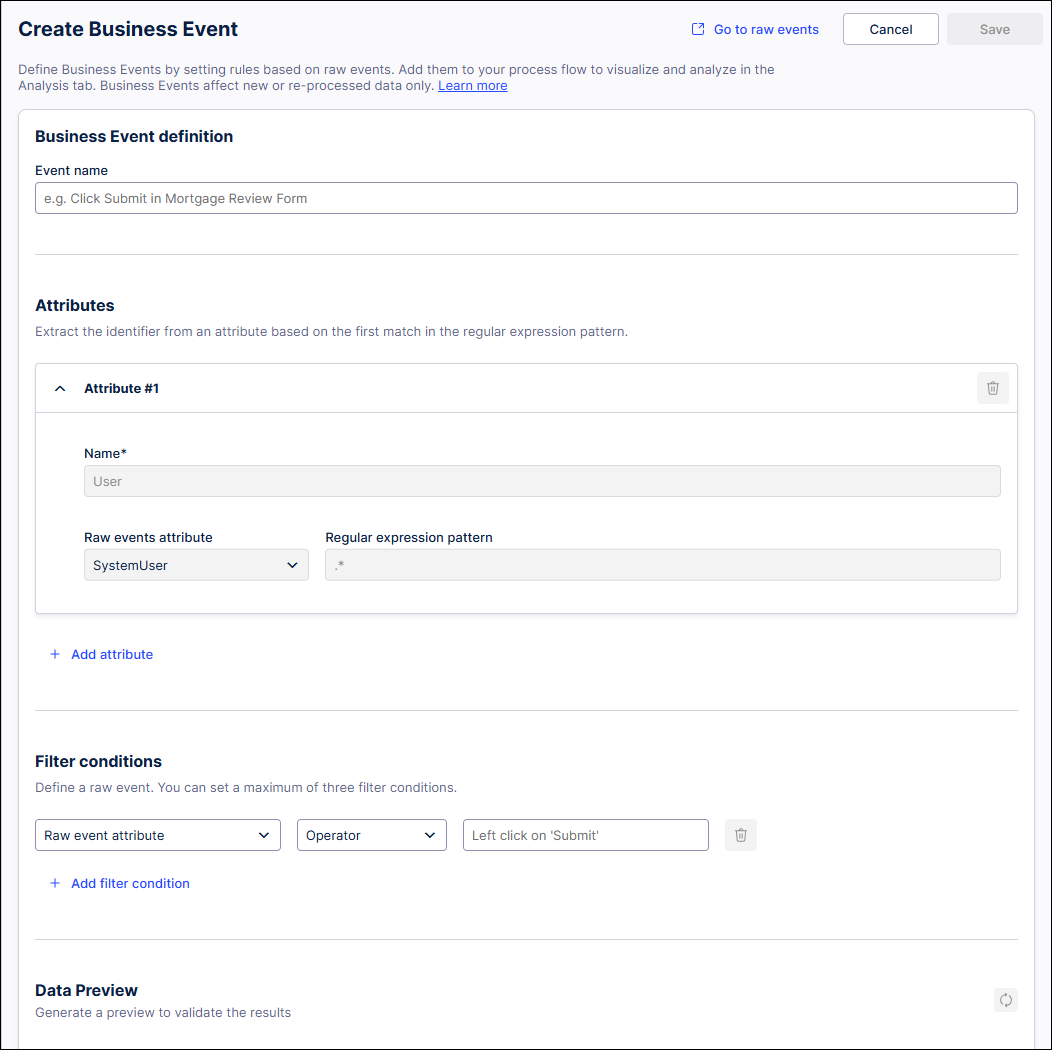
Complete the Business Event fields.
In Data Preview, select Preview to see the raw events that will be included in your Business Event.
Note
If your data set is large, the Data Preview may not display. This is because Data Preview only looks at a limited amount of data (approximately 100k events).
Select Save.
The Business Events screen opens and displays your Business Event.

Business Event fields
Section | Field | Description |
|---|---|---|
Business Event definition | Event name | Meaningful name that displays in the process flow graph. |
Attributes Important The Attribute #1 section will always be pre-propulated and cannot be edited. You may optionally add additional attributes using + Add attribute. | Name | Business Event schema name. |
Raw events attribute | Raw event label type. | |
Regular expression pattern | Refines the raw events included in the Business Event. For more information, see MATCH_PROCESS_REGEX. | |
Filter conditions | Raw events attribute | Raw event label type selected from the dropdown list and used as a filter condition. |
Operator | Defines the relationship between the Raw events attribute and the Event definition. | |
Event definition | Defines the Business Event. This may be automatically populated if the Business Event is created from a raw event or manually added if the Business Event is created from scratch. | |
Data Preview | Select Preview to see the raw events that will be included in the Business Event. |
Editing and deleting a Business Event
You can edit or delete your Business Event in the Business Events screen by selecting the More button  for the Business Event.
for the Business Event.
 |
Defining the data processing type for a Business Event
When a Business Event is created, it applies to new data only. However, you can choose to also re-process existing data or schedule when re-processing will be performed using the Reprocessing existing data option in the Business Events screen. For more information, see Data processing types.
Using Business Events in an analysis
In the Business Events screen, select Go to analysis.
The Workforce Productivity View opens.
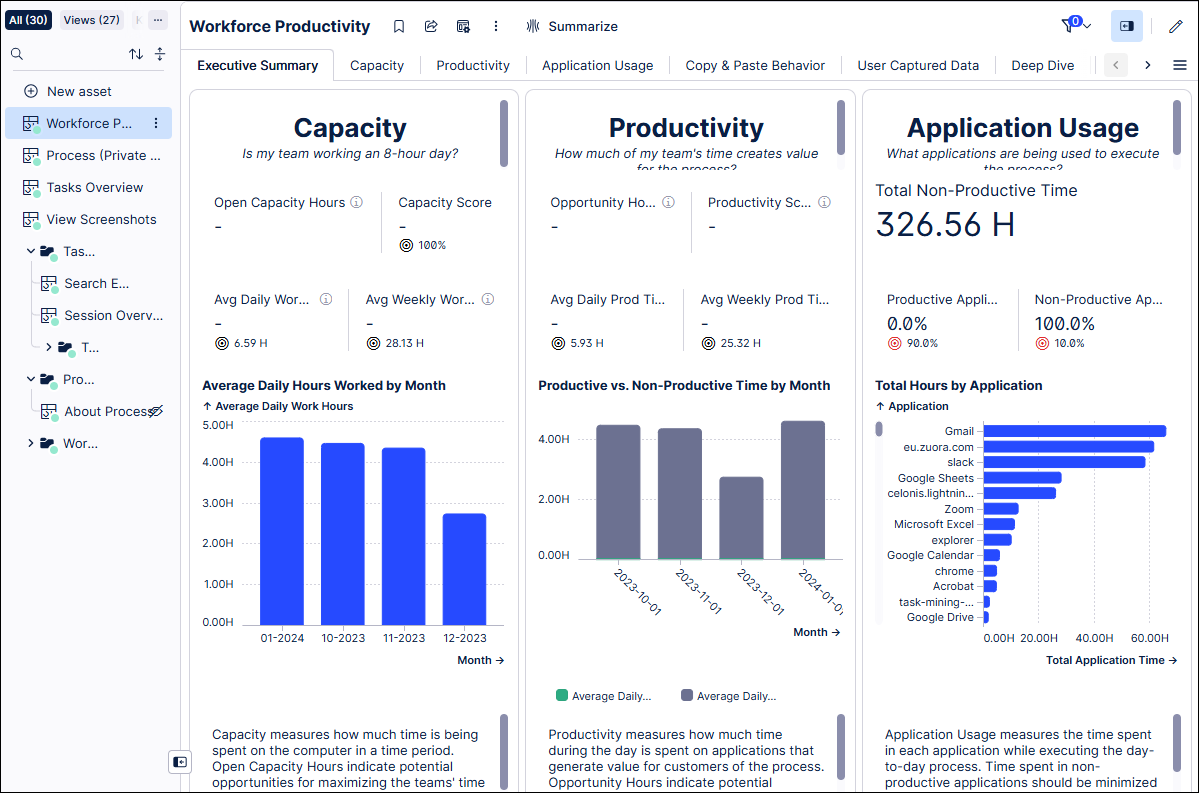
Select the Process View.
The process graph appears, displaying all the Business Events that have been added for that Task Mining project.
